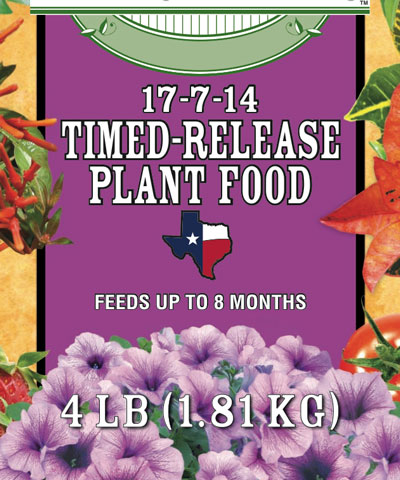Fertilizer Facts You Should Know
Books have been written on the topic of plant foods, and frankly, for amateur gardeners, they’re not very interesting. I’m going to take a try at whittling them down into the pertinent information you’ll want to remember.

Photo: Home lawn requires attention to fertilizer needs.
• Plants utilize 16 nutrient elements in their everyday lives. Three are taken in from air and water: carbon, hydrogen and oxygen.
• The other 13 nutrients originate as mineral elements. Of those, three are used in the greatest amount and are termed “macronutrients.” They are nitrogen, phosphorus and potassium.
• Nitrogen (N) promotes vegetative growth, that is, leaves and stems. It is usually very soluble, so it must be replenished fairly frequently. Soil tests almost invariably show it to be lacking. Plants that are deficient in nitrogen are pale green, even somewhat yellow, over their entire leaf blades. It will be somewhat more pronounced on the lower leaves. Response to the application of a nitrogen fertilizer will be rapid, often within 5 to 10 days.
• The ideal fertilizer for most uses in Texas gardening will have half or more of the nitrogen in encapsulated or coated timed-release formulation. That will ensure slow and sustained feeding rather than big bursts of rampant growth followed quickly by a shutdown of growth. Ammonium sulfate (21-0-0) and ammonium nitrate (33-0-0) are examples of extremely fast-release fertilizers that home gardeners would rarely want to use.
• Phosphorus (P) promotes flowers and fruit and, were you able to see them, roots. In other words, it fosters all the parts of plant growth that nitrogen bypasses. However, phosphorus is notoriously slowly soluble in the soil, so it tends to accumulate, sometimes to toxic amounts. Most soil tests show we need to add little or no additional phosphorus to our lawns, landscapes and gardens.
• Potassium (K) encourages summer and winter hardiness – durability to Texas’ weather extremes. But once again, most Texas soils have adequate amounts of potassium already.

Photo: Everything you’ll need to know in choosing a fertilizer must be listed somewhere on the bag or bottle. Ask a Texas Certified Nursery Professional to help you if you’re unsure.
Analysis vs. Ratio
• Analysis: Every product sold in the state of Texas that claims to be a fertilizer or plant food of any kind must accurately state its guaranteed content on its label. Expressed as percentages, this analysis will be a series of three numbers, for example, 21-7-14. That means that that product contains 21 percent nitrogen, 7 percent phosphorus and 14 percent potassium.
• Ratio: You will hear recommendations of a 1-1-1, 4-1-2, 3-1-2 or other ratio fertilizer. On first glance those appear to be analyses, but the word “ratio” should tell you differently. To get a product’s ratio, you divide each of its major nutrients by the lowest common denominator. A 21-7-14 fertilizer, when divided by 7, then becomes a 3-1-2 ratio plant food. So does 15-5-10, and so will 18-6-12. 20-5-10 and 24-6-12 are two examples of 4-1-2 ratio fertilizers. You would use somewhat different total pounds of those various products to deliver the same actual amounts of nitrogen, phosphorus and potassium, but those would give you a great means of comparing different brands and prices.
Organic vs. Inorganic
What about organic plant foods? They have become very popular in Texas. They do, after all, represent nature’s means of replenishing nutrients to our soil. Common sources are rotted or processed manures, blood and bone meal, fish emulsion and even compost.
Weighing the Plusses and Minuses
As you decide on whether you want to go organic or use inorganic plants foods, consider both sides’ good and bad features.
Organic Fertilizers
Advantages:
• Slow release, so they are less likely to burn tender plant tissues;
• Can be applied virtually anytime of day, any month of year;
• Enrich soils with their organic matter content; and
• Not as likely to wash away in heavy rains.
Disadvantages:
• Low analysis (probably less than 6 percent nutrients);
• Pound-for-pound of actual nutrients, they are almost always a good bit more expensive;
• Slow results, as nutrients are very slowly soluble; and
• Require repeated use as nutrient levels build.
Inorganic Fertilizers
Advantages:
• Easily applied;
• High percentage of nutrients;
• Most cost-efficient means of supplying nutrients; and
• Easier to meet exact nutrient shortages as there are many analyses.
Disadvantages:
• May cause leaf and root burn during hot weather; and
• No soil-building properties since no organic matter.

Photo: When all is said and done, don’t be surprised if one fertilizer product may be all that you need for all different types of plants in your landscape.
All of that laid out before you, the most critical fact is that plants take nutrients into their root systems in water solution and in elemental form. As much as we might want to think that organic fertilizers are better than inorganic fertilizers, that simply is not the case. You can use either type equally well so long as you compensate for its assets and liabilities.
Most good fertilizers will also contain “trace element” packages. Those are the minor elements that plants require in smaller amounts. You’ll usually not have to pay extra for them, but you do want to check to be sure that they’re listed in the small print of the product’s information.
